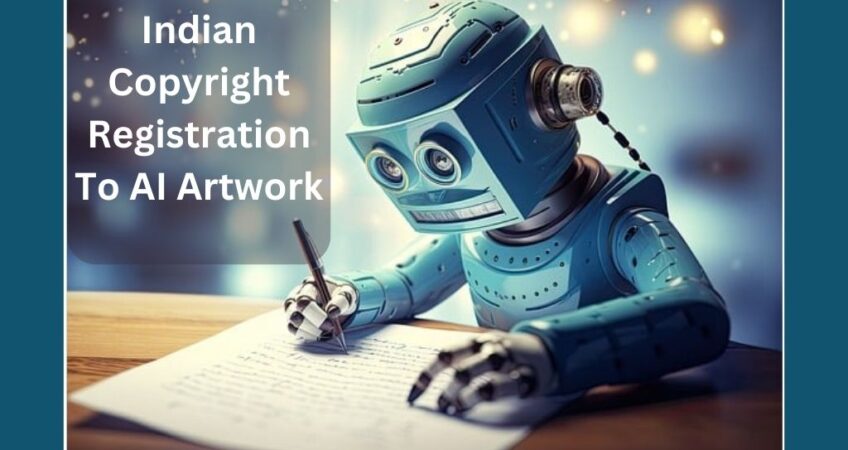AI-generated Artwork
With AI-generated art booming, the Indian Copyright Office is perplexed. Artificial intelligence may produce art independently without the creative input of humans. Following the Indian Copyright Act, these works are considered “computer-generated works.” In 1995, computer-generated works were included in the category of works, most likely when AI was not producing art. The “person who causes the work to be created” is granted authorship for specific works by copyright law. It’s arguable whether AI qualifies as an author for a piece of writing.
There is no precedence in India that suggests software or computers can be given authorship. The Indian Copyright Office has not released any policy guidelines limiting human authorship.
How is Indian copyright law treating AI-generated artwork?
The growth of AI-generated art has confused the Indian Copyright Office. In response to the request for “a machine painting a canvas,” The Indian Copyright Act classifies these works as “computer-generated works.”
Computer-generated art was added to the category of works in 1995, most likely when AI was not creating art. Copyright law grants authorship to the “person who causes the work to be created” for specific types of works. Whether AI counts as an author for a piece of writing is debatable. The applicant is now required by the Copyright Office to “inform the Copyright Office about the legal status of the AI tool Raghav Artificial Intelligence Painting App,” according to the withdrawal notice.
The applicant (a human co-author) now claims that once a copyright registration is issued, it cannot be “withdrawn.” The process is a court-mandated rectification proceeding to cancel the registration. This notice was published, as reported, sometime in November of 2021. It needs to be clarified where this procedure is right now. However, the Copyright Office website indicates that this application is still in the “registered” stage.
This is, of course, old news. However, this is still a worthwhile problem since AI-generated art has yet to disappear but gained popularity.
This application may serve as a precedent for other applications until it is formally stricken off the register (or rectified if such corrections are allowed). The Copyright Office is powerless, even though it may now feel that human authorship is a prerequisite for copyright protection. If their applications are rejected again, applicants may file wrongful rejection lawsuits. In any case, the Copyright Office might have to invest time, funds, and resources in pursuing this matter in court. This might have been prevented if the office had kept its mind about the initial decision.
What were the loopholes in the copyright registration process?
It is unexpected how carelessly copyright registrations are distributed. This is particularly problematic because High Courts now see copyright registrations as bulletproof licences rather than just registrations (which are the end product of optional administrative procedures). The Gujarat High Court has ruled that immunity from copyright infringement is granted by certificates of registration obtained from the Copyright Office, as explained by Lokesh. He clarifies that this reading is not accurate.
On the one hand, there is a need for more legal precedence regarding the classification of AI as an author. To “extract benefits from AI,” a Parliamentary Standing Committee has suggested “revisiting IPR legislations and implementing a strong IPR framework”, but the law itself is still vague and unchanging. However, a copyright registration designating AI as a co-author and serving as a defence against copyright infringement allegations can be obtained—an unsettling paradox.
The world is wrestling with the same problem that new technology is bewildering. For example, the US Copyright Office has emphatically denied these applications, stating that a work is only legally and formally protected by a copyright if a human author writes it. Conversely, the UK Intellectual Property Office is adopting a wait-and-watch strategy since it recognises the dynamic character of computer-generated works.
Instead of acting rashly and setting potentially harmful precedents, Indian authorities would be better advised to consider how to address such concerns carefully.

